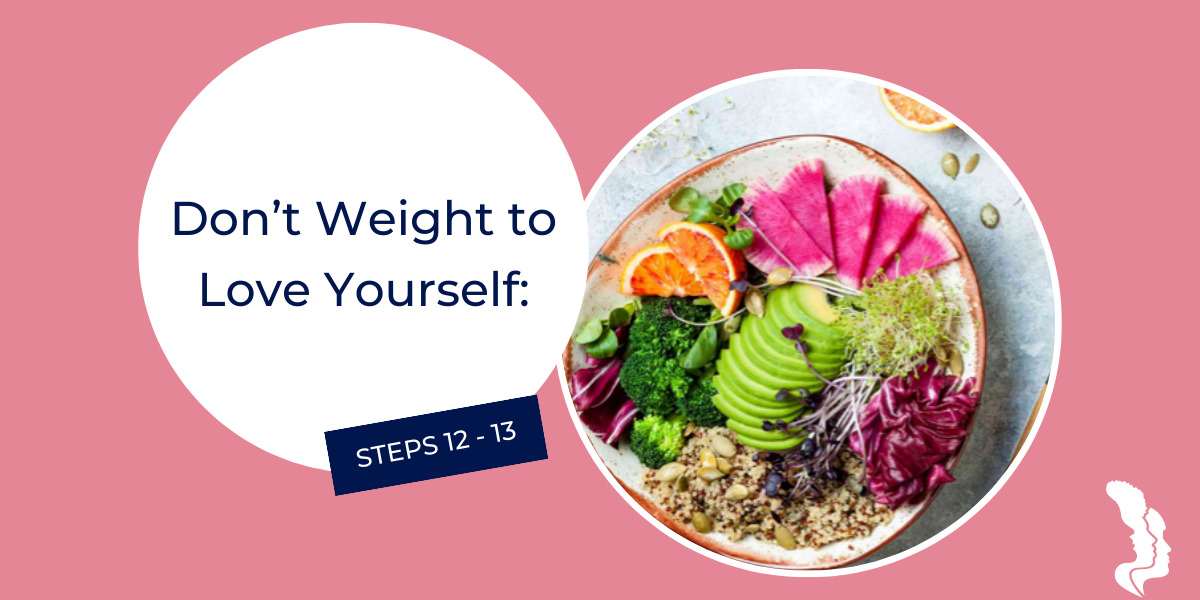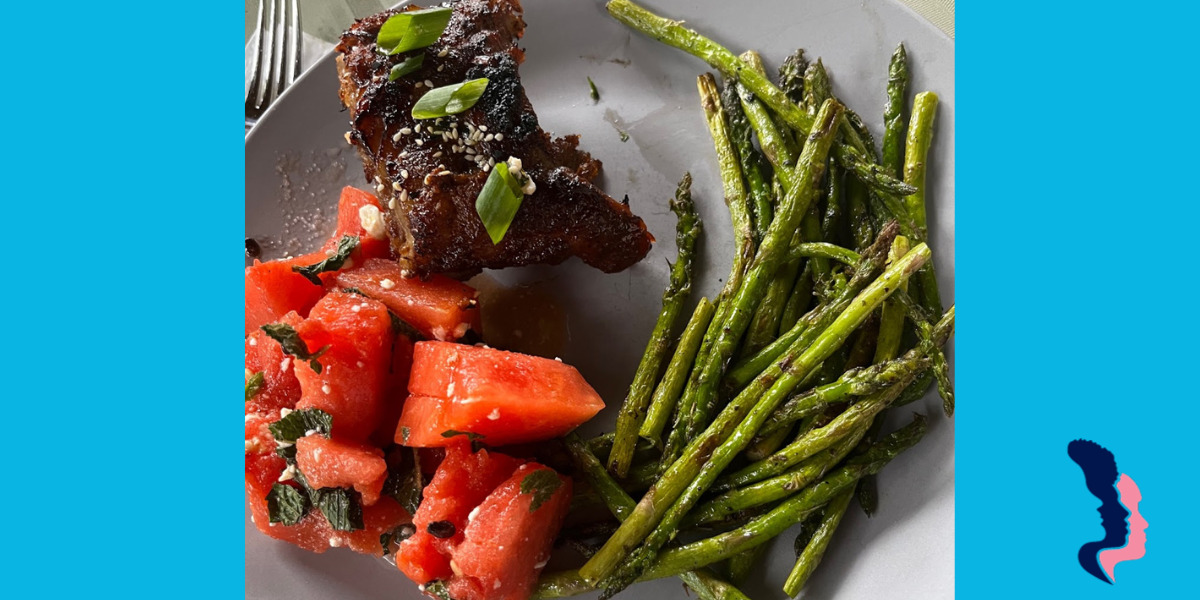Step 1: Keep a Food Journal, write down everything you eat. Step 2: Keep a…

Don’t Weight to Love Yourself: Steps 12-13
Step 1: Keep a Food Journal, write down everything you eat.
Step 2: Keep a Food Journal, write down everything you eat before you put it in your mouth.
Step 3: Keep a Food Journal, write down everything you eat before you put it in your mouth, plus where, when, why and with whom you eat.
Step 4: Eat whatever you want but first drink a glass of water.
Step 5: Eat whatever you want but only at the table.
Step 6: Set the table.
Step 7: Slow down, savor every bite!
Step 8: Put the fork down between bites.
Step 9: Sip a large glass of water with each meal.
Step 10: Plan nutritious meals
Step 11: Prepare visually appealing foods.
Step 12: Concentrate on the Three “T’s”
Step 13: Eat Systematically
Welcome back to Don’t Weight to Love Yourself! If you’ve been regularly reading this blog, I don’t want to bore you so I won’t repeat myself. Instead, I will pick up where I left off last month.
It was harder than I initially thought to change a lifelong habit and slow the pace of the meals I consumed. Growing up in a family of eleven, I spent my first 20 years eating quickly to ensure I got my fair share. It’s a thing! Ask anyone who grew up in a large family, and they will tell you that it’s almost a universal experience.
To moderate my pace of eating, I developed some strategies, practices, and tricks. First, I challenged myself to note the taste, temperature, and texture of every bite. For example, “This steak is flavorful (taste), hot (temperature), and tough (texture). The peas are sweet and savory (taste), warm (temperature), and soft (texture.) This lemon meringue pie is sweet and tart (taste), cold (temperature), and creamy (texture.) I know it sounds boring to be so focused on each forkful of food but it was anything but!
Over a couple of weeks, as I practiced assigning three adjectives to each bite, something strange happened. Instead of just enjoying food, I found joy in the act of eating. I actually looked forward to meals, knowing that for at least 20 minutes my attention would be totally immersed in one and only one activity! It sounds weird but intentionally concentrating on the taste, temperature, and texture of the food I was eating began to feel peaceful and relaxing. I didn’t know it then, but now, years later, I realize this was my first experience of living in what Ekert Tolle calls the “Ever Present Now.” In his book, The Power of Now, Tolle describes the deeply satisfying feeling derived from focused attention as the basis for meditation and the gateway to peace. Who knew???
As I became more aware of the taste, temperature, and texture of foods, I practiced eating systematically. What??? I can hear you screaming, “What is she talking about? Is she nuts?” By definition systematically means “to do something in an orderly, methodical way.” So, for part of each meal, I intentionally ate the foods on my plate in a descending or ascending order of temperature, texture, and taste. For example, if I was eating roast chicken, mashed potatoes, and broccoli and I was focusing on descending temperatures, I’d first gobble the juicy, just-out-of-the-oven chicken, no doubt burning my tongue, followed either by the broccoli or potatoes. But if I was eating the same meal and was focusing on taste, I’d always eat the mashed potatoes first (they were and still are one of my all-time favorites) then the chicken, and last but not least the broccoli (no offense, broccoli!) Likewise focusing on texture (which food required the most chewing), I’d eat the chicken, followed by the broccoli, and then the mashed potatoes.
For a lot of years, I was at war with food. Carl Jung, the founder of psychoanalytic psychology, said, “What you resist persists.” These strategies, developed and practiced over time, were instrumental in helping me break the long-held, self-destructive narrative that I couldn’t change my eating habits. Instead of seeing food as “evil” and attempting to avoid it, I embraced it. I strove to appreciate the tastes, colors, textures, aromas, temperatures, and nutritional content of each meal. Little by little, the same way I was learning to love myself, I was replacing my old eating habits with new ones.



